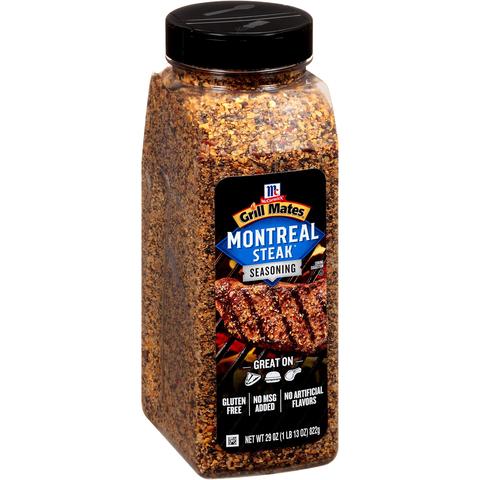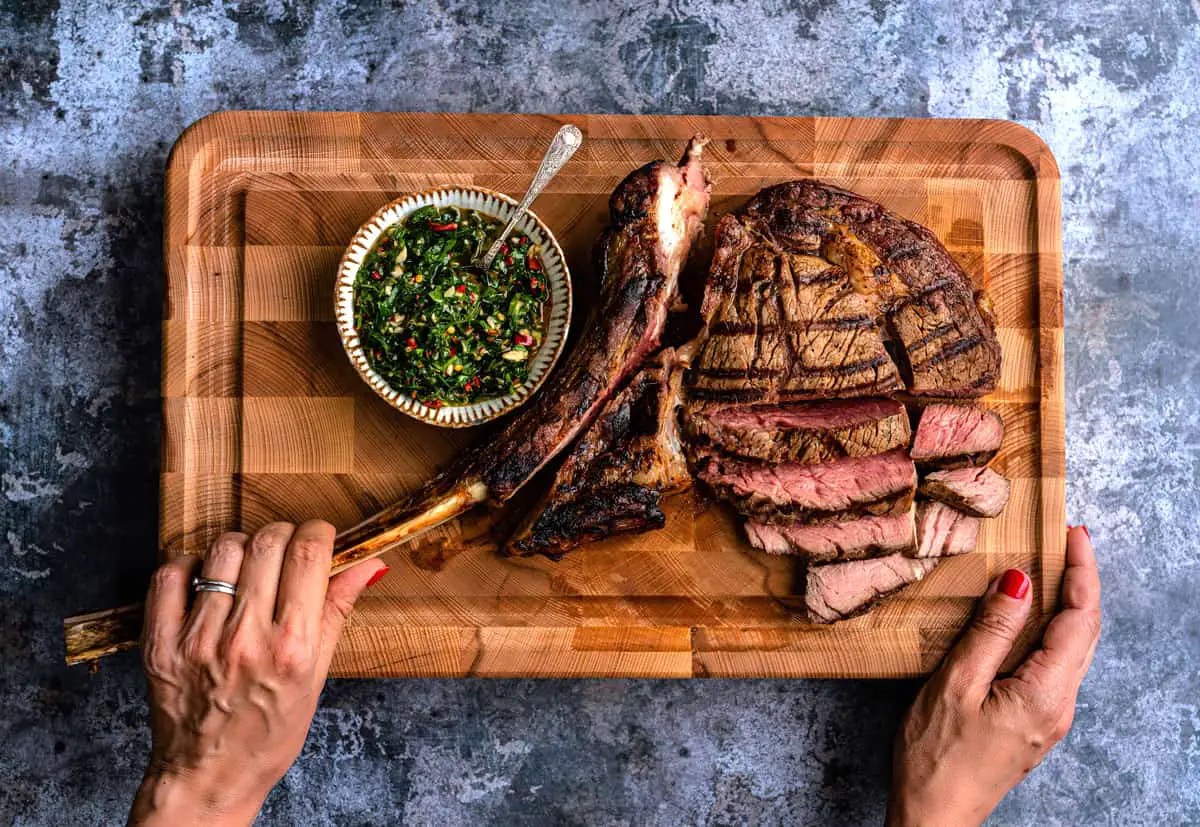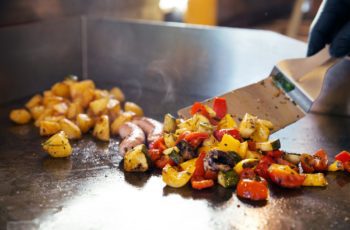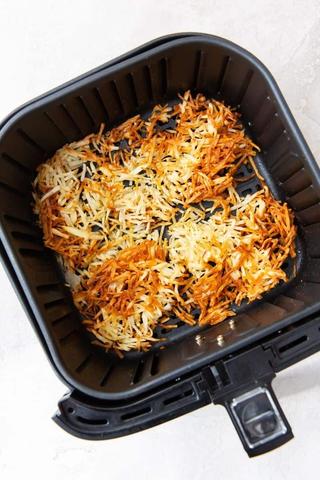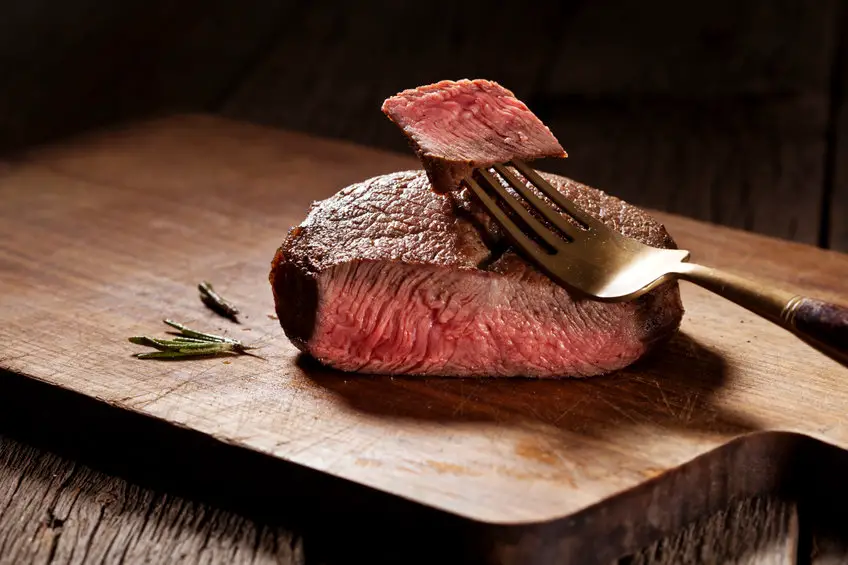
As a steak lover, I’m always on the lookout for new and exciting ways to enjoy this classic dish. Recently, I overheard someone at a restaurant ordering a “blue steak,” and it piqued my curiosity. What exactly is a blue steak? Is it safe to eat? And how does it taste? In this article, I’ll delve into the world of blue steaks, exploring what they are, how to cook them, and why they’re a favorite among true steak aficionados. So, if you’re ready to expand your culinary horizons and discover a whole new level of rareness, let’s dive in.
When it comes to cooking a blue steak, it’s all about achieving that perfect balance between searing the outside while leaving the inside almost raw. But why is it called a blue steak? And how does it differ from a rare steak? We’ll explore these questions and more, uncovering the nuances of each type of steak and what sets them apart. Additionally, we’ll discuss the safety of eating a blue steak and address any concerns you may have. So, get ready to tantalize your taste buds and learn the secrets of cooking the ultimate ultrarare meal.
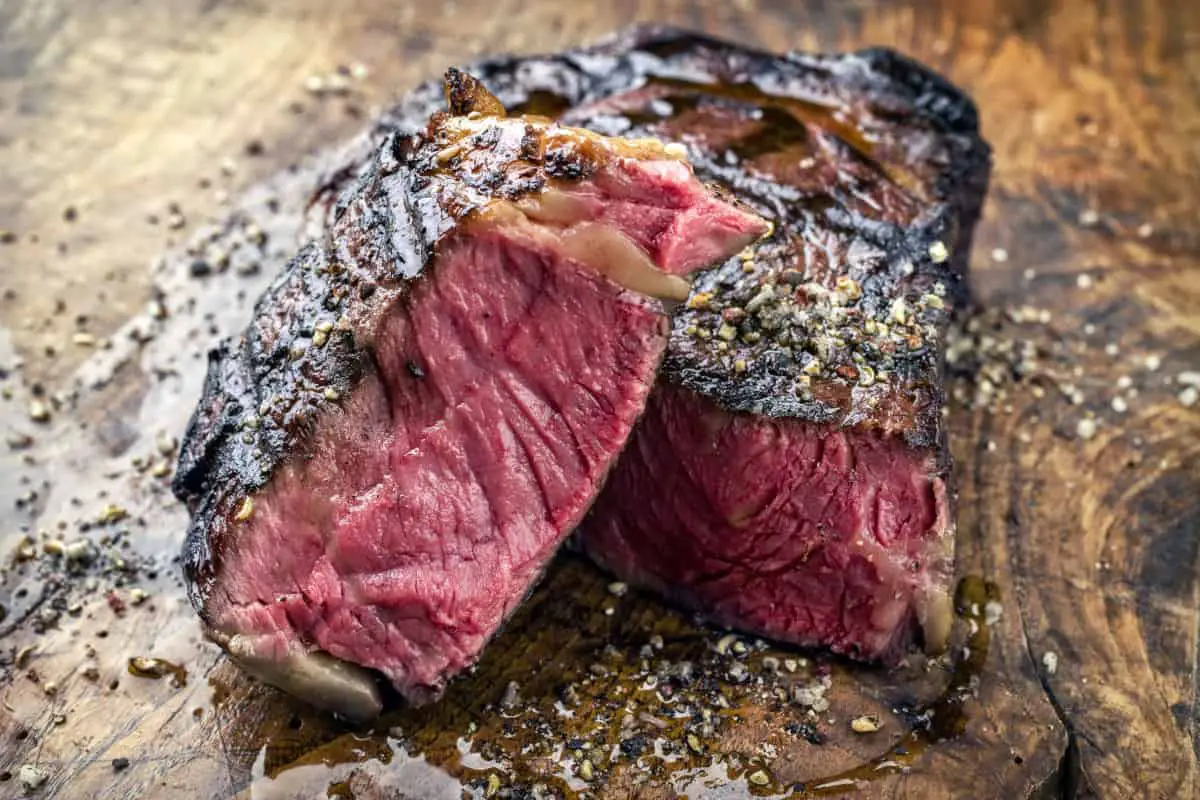
What is Blue Steak?
When you’re sitting in a steak restaurant scrolling through the menu, you might come across the term “blue steak”. It’s an expression that may seem odd if you’re not a meat expert. So, what exactly is a blue steak?
A blue steak, also known as bleu steak, refers to the very first stage of cooking a steak. It is a cooking technique where the inside of the flesh is hardly cooked and stays shy from being raw, while the outside is seared and looks like a regular steak. The term “blue” comes from the blue color that the meat retains on the inside.
To clarify, blue steak has nothing to do with blue cheese. They don’t share any commonalities, although they do pair well together in a dish. It’s important to note that blue steak is not the same as a rare steak, although they are very close in terms of cooking.
To differentiate between the two, a rare steak has a center that is approximately 75% red and 25% pink. On the other hand, a blue steak is considered an extra rare steak, with the center being almost entirely red.
If you’re curious about the differences between different types of steaks, you can always refer to a steak chart, such as the one provided by Webstaurantstore.com. It outlines the variations in coloring and texture for each type of steak when cut open.
When cooking a blue steak, selecting the right cut of meat is just as important as the cooking technique. A few minutes of cooking won’t be sufficient for a steak with excessive fat marbling or connective tissue. It’s essential to choose a cut that will highlight the flavors of the beef and ensure a tender and enjoyable eating experience.
Is Blue Steak Safe to Eat?
When it comes to the safety of eating a blue steak, the answer is yes, it is safe. Although the idea of consuming such a rare piece of meat might make some people hesitant, it is important to note that proper cooking techniques ensure that a blue steak is safe to eat.
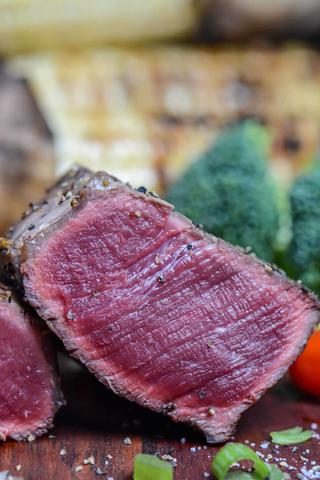
The key to making a blue steak safe is the sear. Searing the outside of the steak at high temperatures kills any bacteria that might be present on the surface. Since bacteria cannot penetrate the meat, the searing process effectively eliminates any potential risks.
It’s important to choose a high-quality cut of meat for cooking a blue steak. Opting for a tender and well-marbled cut, such as ribeye or filet mignon, ensures a more enjoyable eating experience. The marbling in the meat helps to keep it tender and flavorful, even when cooked to such low internal temperatures.
While cooking a blue steak to a very low internal temperature of 84 degrees Fahrenheit might be considered unconventional, those who appreciate the unique flavors and textures of a blue steak find it to be a culinary delight.
So, if you’re a meat lover looking to explore new dining experiences, give a blue steak a try. Just remember to choose the right cut of meat and follow proper cooking techniques to ensure both the safety and enjoyment of your meal.
Why Should You Try Blue Steak?
As an expert in the world of steak, I highly encourage you to give blue steak a try. Here are a few reasons why you should consider experiencing the wonders of this unique cooking style:
- Unparalleled tenderness: Blue steak is renowned for its incredibly tender texture. By cooking the steak quickly and leaving the center practically raw, you’re able to enjoy a melt-in-your-mouth experience like no other. Each bite is a succulent delight that will leave you craving for more.
- Juicy and flavorful: The vibrant red interior of a blue steak ensures that every bite is bursting with natural flavors. Since the cooking time is short, the meat retains all its juicy goodness. The result is a steak that’s moist, rich, and incredibly satisfying.
- Quick and convenient: Blue steak is perfect for those who crave a delicious steak but don’t have a lot of time for cooking. It’s a quick and hassle-free option, allowing you to enjoy a perfectly cooked steak in no time. So, whether you’re having a busy weeknight or hosting a last-minute dinner party, blue steak is a fantastic choice.
- A unique culinary experience: Trying blue steak is a culinary adventure that allows you to explore the wide range of flavors and textures that steak has to offer. It’s a bold and unconventional way of preparing meat that will undoubtedly impress your taste buds and spark conversations at the dinner table.
Remember, to fully enjoy the benefits of a blue steak, it’s crucial to choose the right cut of meat. Opt for lean and tender cuts without excessive fat or marbling. The best cuts for blue steak include sirloin tip, top sirloin, round steak, flat iron, and filet mignon. These cuts are known for their superb taste and tenderness.
So, if you’re ready to take your steak experience to the next level, I urge you to give blue steak a chance. Its unmatched tenderness, juicy flavor, and convenience make it a culinary delight worth exploring. Just remember to choose the right cut of meat and follow the proper cooking techniques to ensure both the safety and enjoyment of your meal.
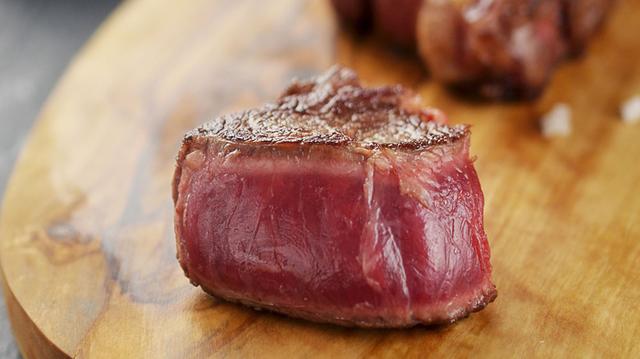
Why is it Called Blue Steak?
When you first hear the term “blue steak,” it is natural to wonder why it has such a unique name. The origin of the name actually comes from the blue color that the meat retains on the inside. But why exactly is it called blue steak? Let me explain.
The blue color of a blue steak is a result of its cooking process. During the initial stage of cooking, the inside of the steak is hardly cooked and stays shy from being raw. This means that the center of the steak retains its natural red color, which can appear bluish due to the cooking method. The outside of the steak is seared to create a brown crust, giving it the appearance of a regular steak.
But it’s not just about the color. The term “blue steak” is also a reflection of its cooking temperature. Unlike rare steaks, which are cooked to an internal temperature of around 120 degrees Fahrenheit, a blue steak is cooked to a very low internal temperature of about 84 degrees Fahrenheit. This ultra-rare doneness is achieved through a quick cooking process that ensures the inside of the steak remains tender and juicy.
So, to summarize, a blue steak gets its name from the blue color that the meat retains on the inside during cooking. This color is a result of the steak being cooked to an extremely rare doneness at a low temperature. It’s an intriguing name for an equally intriguing culinary experience.
Now that we know why it’s called blue steak, let’s explore how it tastes and the unique culinary experience it offers.
Comparing Blue Steak with Other Levels of Doneness
When it comes to steak, there are various levels of doneness that you can choose from. Each level of doneness offers a unique culinary experience, with different textures and flavors. In this section, we will compare the blue steak with other levels of doneness to help you understand its distinct characteristics.
- Blue Steak: Blue steak is the first degree of doneness and is defined by its light sear on the outside and red and raw interior. It has an internal temperature of 115°F to 120°F (46°C to 49°C). The texture of a blue steak is very soft, almost similar to raw meat, and it offers a strong beefy flavor. This level of doneness allows you to truly savor the natural flavor of the meat, but it may be slightly chewier and spongier compared to even a medium-rare steak.
- Rare: The next level of doneness is rare. A rare steak has an internal temperature of 120°F to 130°F (49°C to 54°C). It is cooked slightly more than a blue steak, but the center remains very red. Rare steak is still very juicy and tender, with a rich beef flavor. This level of doneness is ideal for those who prefer a softer texture but with a bit more cooked meat than a blue steak.
- Medium Rare: Moving up the scale, medium-rare steak has an internal temperature of 130°F to 140°F (54°C to 60°C). It has a warm red center and is firmer than a rare steak. Despite being cooked a bit more, it retains juiciness and tenderness, with a slightly more pronounced beef flavor. Medium-rare steak is a popular choice among steak lovers as it strikes a balance between tenderness and cooked meat.
- Medium: A medium steak has an internal temperature of 140°F to 150°F (60°C to 65°C). It has a pink center with a bit of brown towards the outside. The texture is firmer than medium-rare, and the meat becomes less juicy. However, it still maintains a good amount of moisture, and the beef flavor is deliciously accentuated.
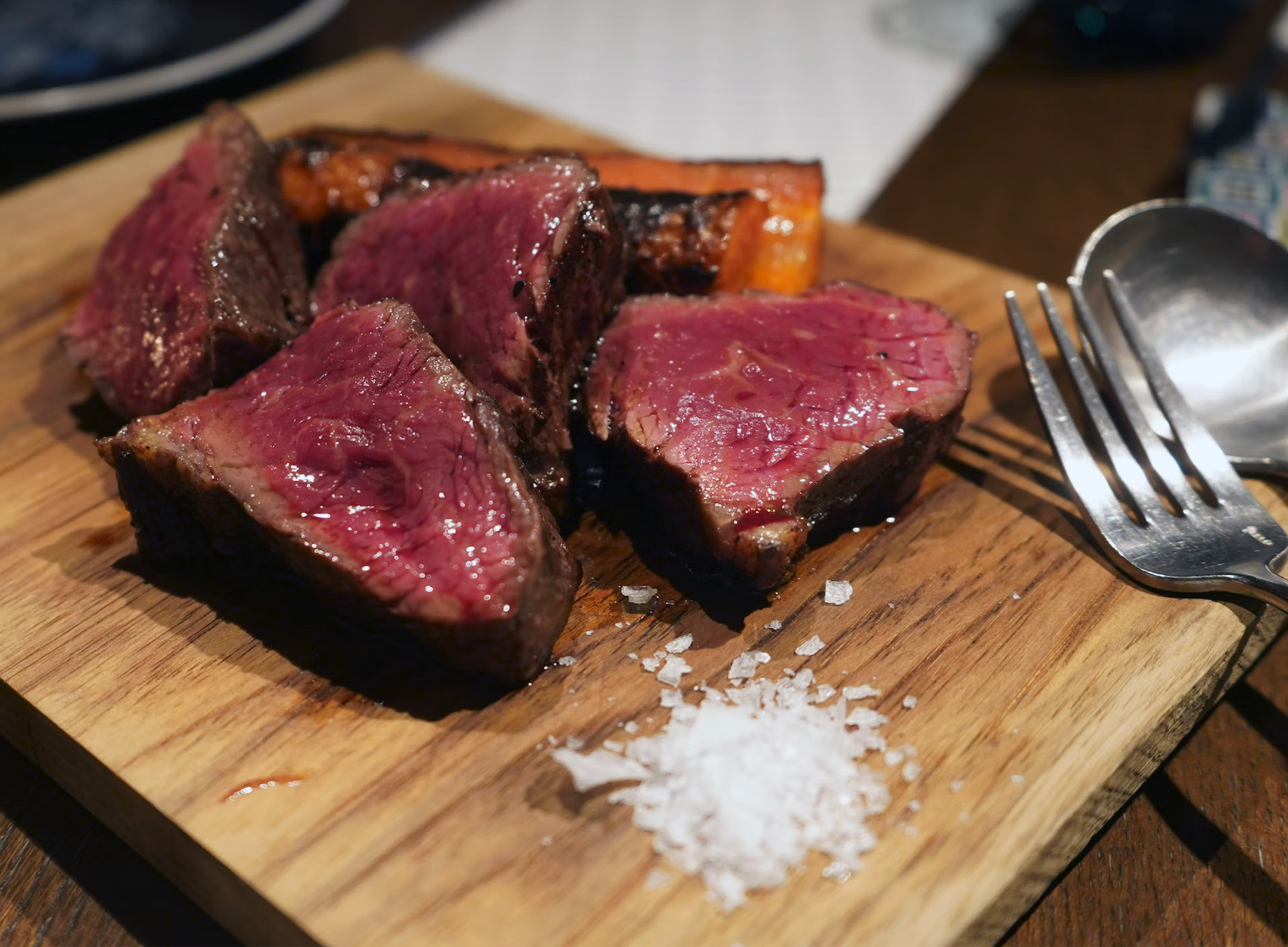
What are the Best Cuts for Blue Steak?
When it comes to cooking a blue steak, choosing the right cut of meat is essential to achieve the perfect balance of texture, flavor, and tenderness. While any cut of steak can technically be cooked to a blue level of doneness, there are a few cuts that are particularly well-suited for this cooking method. Here are some of the best cuts for blue steak:
- Ribeye: Known for its marbling and rich flavor, ribeye is one of the most popular choices for blue steak. The high fat content in ribeye helps to keep the steak juicy and flavorful, even at the ultra-rare level of doneness. The marbling also adds an extra layer of tenderness to the meat, resulting in a melt-in-your-mouth experience.
- Filet Mignon: As one of the most tender cuts of beef, filet mignon is an excellent choice for blue steak. Its inherent tenderness means that even at the rarest level of doneness, the meat will still be incredibly tender and buttery. The mild flavor of filet mignon allows the natural beefiness to shine through without overpowering the taste buds.
- Striploin: With a perfect balance of tenderness and flavor, striploin is another great option for blue steak. The striploin cut comes from the back of the animal, just behind the ribeye, and offers a slightly leaner option without sacrificing taste or juiciness. It has a robust beefy flavor that intensifies when cooked to a blue level of doneness.
- T-Bone: The T-bone steak, featuring both the filet mignon and the striploin separated by a T-shaped bone, is a fantastic choice for those who enjoy a combination of tenderness and flavor. The tender filet mignon cooks to a perfect blue level of doneness, while the striploin offers a more robust and meaty flavor.
It’s important to note that different cuts of meat may require slightly different cooking times and techniques to achieve the desired blue doneness. It’s always a good idea to consult a reliable source or a professional butcher for specific instructions based on the cut of meat you choose.
Which Cuts Should You Not Cook Blue? Why Not?
When it comes to cooking a blue steak, selecting the right cut of meat is crucial. While some cuts are perfect for achieving that tender and juicy blue steak, there are a few cuts that are not suitable for this cooking method. Let’s take a deeper look at why certain cuts should not be cooked blue:
- Brisket: Brisket is a tough cut of meat that requires long, slow cooking to break down the collagen and make it tender. Cooking brisket blue would leave it extremely tough and chewy, as it does not have enough fat or marbling to provide the desired melt-in-your-mouth texture.
- Flank steak: Flank steak is another lean cut that is best suited for marinating and grilling. Cooking it blue would result in a tough and chewy texture, lacking the tenderness that makes a blue steak so enjoyable. It’s better to reserve flank steak for other cooking methods like grilling or stir-frying.
- Chuck steak: Chuck steak comes from the shoulder of the cow and is known for its rich flavor. However, it also has a significant amount of connective tissue, which requires longer cooking times to melt and tenderize. Cooking chuck steak blue would result in a tough and chewy texture, making it less than ideal for this particular cooking method.
- Skirt steak: Skirt steak is a flavorful cut of beef, but it is best cooked to at least medium-rare to achieve its desired tenderness. Cooking it blue would leave it undercooked and lacking the desirable texture that makes skirt steak so enjoyable.
The key to cooking a blue steak is selecting cuts that are naturally tender and have minimal connective tissue. These cuts, such as ribeye, filet mignon, striploin, and T-bone, provide the perfect balance of tenderness, flavor, and juiciness for a delicious blue steak experience.
By understanding which cuts are not suitable for cooking a blue steak, you can ensure that you choose the right cut of meat to achieve the desired result. Remember, it’s all about selecting a cut that will provide the perfect balance of flavor and tenderness for that ultimate blue steak experience.
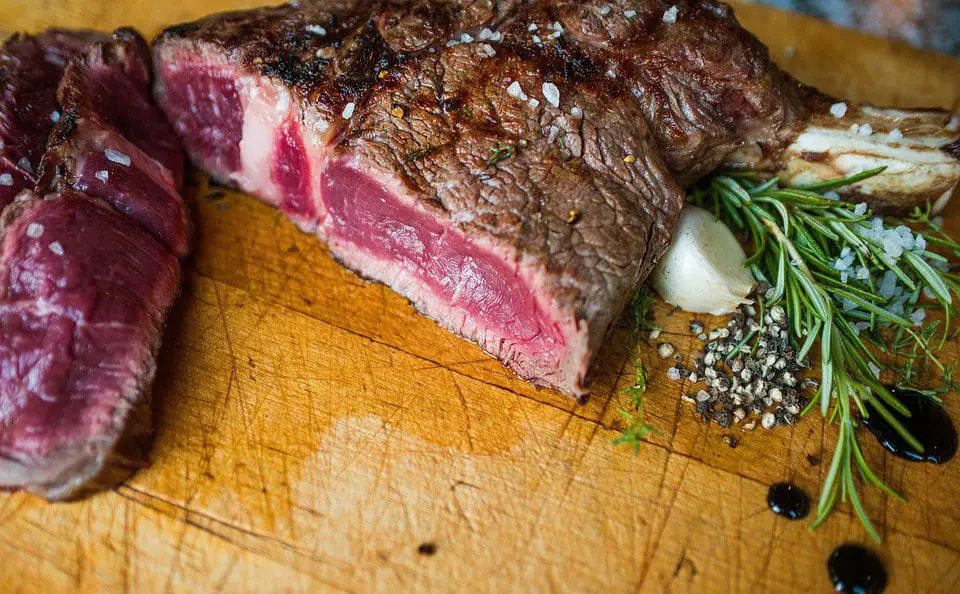
What Temperature to Cook Blue Steak to?
When it comes to cooking a blue steak, the internal temperature is key. To achieve that perfect balance between seared on the outside and rare on the inside, you want to cook your blue steak to about 115°F (46°C) internally. This low temperature is what distinguishes a blue steak from a rare steak.
Cooking a blue steak involves searing it on high heat for a very short amount of time, just enough to create a delicious crust. The inside of a blue steak is usually a cool red color, with a slightly metallic taste indicative of meat that is barely cooked. This delicate flavor is greatly appreciated by those who enjoy the unique experience of a blue steak.
To ensure that you’re cooking your blue steak to the right temperature, I recommend using a meat thermometer. This handy tool allows you to accurately monitor the internal temperature of your steak as it cooks. Aim for a temperature of 115°F (46°C) to achieve that perfect blue steak.
When searing your blue steak, be sure to use a hot pan or grill. The high heat will create that crave-worthy crust on the outside, while the cool red center remains tender and juicy. Remember to sear the steak on all sides for an even cooking process.
It’s important to note that blue steaks may not be for everyone. Some people may prefer a more well-done steak, while others enjoy the unique flavors and textures of a blue steak. Regardless of your personal preference, it’s always important to cook your steak safely and properly.
So, next time you’re in the mood for a culinary adventure, consider trying a blue steak. With the right temperature and cooking techniques, you can savor the delicate flavors and enjoy a truly unique steak experience.

What Does Blue Steak Taste Like?
As a high-end steak aficionado, you may be curious about the unique flavors and tenderness of a blue steak. It’s important to note that blue steak is an acquired taste and may not be for everyone. So, what does it actually taste like?
When you take your first bite of a blue steak, your taste buds will encounter a rich beefy flavor with a hint of a gamey undertone. The seared exterior, which is your first point of contact, will deliver exactly what you expect – a savory umami taste resulting from the charring and the Maillard reaction. This reaction, named after the French chemist who discovered it, occurs when amino acids and sugars in the meat transform under high heat, creating a complex and delicious array of flavors.
However, it’s important to remember that the interior of a blue steak retains its rawness. Therefore, the taste of the center will be more subtle, with a slightly iron-like tang. The texture of the meat will appear tender and velvety, and the juices within are abundant and succulent.
It’s worth noting that the taste of a blue steak is quite different from a more well-done steak. The less cooking time allows the natural flavors to shine through, giving you a taste that is pure, unadulterated, and distinctively rare. For those who appreciate the essence of a perfectly cooked piece of meat, a blue steak is a true delicacy.
So, if you’re considering trying a blue steak for the first time, prepare your palate for a unique and unforgettable gastronomic experience. Just remember to select the right cut of meat and cook it with precision to achieve the perfect blue steak – the epitome of steak perfection without compromise.
What Texture is Blue Steak?
As I mentioned earlier, a blue steak is cooked to an extremely rare doneness, with the center still blue in color. But what about the texture? Well, a blue steak has a unique texture that sets it apart from more well-done steaks.
Texture: A blue steak is juicy and slightly chewy, with a bright red center. The texture is often described as tender and velvety, with the meat melting in your mouth. It’s important to note that the texture of a blue steak is quite different from a more well-done steak. The less cooking time allows the natural flavors to shine through, resulting in a buttery, melt-in-your-mouth experience.
While the exterior of the steak is seared to a brown color, the inside remains cool and raw. This contrast in texture creates an interesting and enjoyable sensory experience for steak lovers who appreciate the unique characteristics of blue steak.
In terms of tenderness, a blue steak is known for being tender due to its limited cooking time. This is why it’s crucial to choose the right cut of meat when cooking a blue steak. High-quality cuts, such as ribeye or filet mignon, are often recommended as they tend to be more tender and offer a fantastic eating experience.
The juicy and succulent nature of a blue steak is another aspect that contributes to its texture. The limited cooking time ensures that the juices are retained, resulting in a steak that is bursting with flavor. The combination of the seared exterior and the juicy interior creates a delightful contrast in both texture and taste.
The texture of a blue steak is tender, velvety, and slightly chewy, with a bright red center. The limited cooking time allows the natural flavors to shine through and creates a unique sensory experience. So, if you’re looking for a steak with a melt-in-your-mouth texture and an unforgettable eating experience, a blue steak might just be the perfect choice.
How to Cook a Steak to Blue on a Grill
When it comes to cooking a blue steak, it’s important to follow the right techniques to achieve the desired result. Here’s my step-by-step guide on how to cook a steak to blue on a grill:
- Bring the steak to room temperature: Before you start cooking, let your steak sit out at room temperature for about 30 minutes. This allows the meat to cook more evenly and ensures a tender result.
- Preheat the grill or cast iron pan: Get your grill or cast iron pan ripping hot. This will help you achieve a delicious sear on the outside of the steak while keeping the inside cool and red.
- Season the steak: While the grill or pan is heating up, apply a little bit of avocado oil on all sides of the steak. This will help prevent sticking and create a beautiful crust. Then, season your steak generously with salt and pepper.
- Sear each side of the steak: Once the grill or pan is hot, it’s time to cook the steak. Sear each side of the steak for about 1-2 minutes. Keep flipping and continuously check the internal temperature with a meat thermometer until it reaches about 115°F (46°C). This is the perfect temperature for a blue steak.
- Let the steak rest: Once the steak has reached the right internal temperature, remove it from the heat and let it rest for a few minutes. This allows the juices to redistribute and ensures a juicy and flavorful steak.
Remember, cooking times may vary depending on the thickness of the steak and the heat of your grill or pan. It’s always best to use a meat thermometer to ensure accurate results.
Now that you know how to cook a steak to blue on a grill, you can impress your friends and family with a unique and delicious dish. But keep in mind that personal preference plays a big role when it comes to steak doneness, so adjust the cooking time accordingly.
Next, let’s dive into the different cuts of meat that are best suited for cooking a blue steak.
Are Blue and Rare Steaks the Same?
If you’re new to the world of rare steaks, you may be wondering if a blue steak and a rare steak are the same thing. While both are cooked to preserve the juicy tenderness of the meat, there are subtle differences between the two.
A blue steak is cooked even less than a rare steak, making it the rarest way to enjoy your steak. It is typically cooked to an internal temperature of 115°F (46°C) and is seared on the outside to create a brown crust while leaving the interior raw. This gives it a unique blue or purple color in the middle, hence the name “blue steak.” The aim is to maintain the cool, red center while achieving a flavorful sear on the outside.
On the other hand, a rare steak is cooked to a slightly higher internal temperature, usually around 130°F (54°C). It is still cooked to preserve the tenderness and juiciness of the meat, but the center is not as cool and red as a blue steak. Instead, it has a warm, red center and a lightly pink exterior.
So, while both blue and rare steaks are considered to be on the rarer side, a blue steak is cooked even less and has a noticeably cooler and more vibrant center. It is a true delicacy for those who enjoy the intense flavors and textures that come with a rare steak.
When it comes to personal preference, it’s important to note that not everyone appreciates the unique qualities of a blue steak. If you’re a lover of medium-rare steaks or prefer your meat well-done, a blue steak may be too rare and raw for your taste. However, if you’re a fan of rare steaks or enjoy the luxuriousness of steak tartare, then a blue steak might be right up your alley.
What Is A Black And Blue Steak?
A black and blue steak is a variation of a blue steak. While both types of steaks are cooked to a rare doneness level, the main difference lies in the cooking method and the appearance of the steak.
With a black and blue steak, the steak is not only seared but also charred on the exterior. This results in a slightly burnt and charred look that adds a smoky flavor to the meat. The charred exterior gives the steak a unique texture and a rich, robust flavor.
To achieve a black and blue steak, you can follow similar cooking preparations to a blue steak. Start by heating a high heat source, such as a gas grill or gas range with a pan. Season the steak with salt and black pepper to enhance the natural flavors of the meat.
Once the heat source is ready, sear the steak on all sides until it develops a sear and a charred exterior. This usually takes a few minutes on each side. Remember to roll the steak on its edges to ensure that all sides are evenly seared and charred.
When the steak is cooked to your desired level of doneness, remove it from the heat source and let it rest for a few minutes before serving. This allows the juices to redistribute throughout the meat for a juicy and flavorful bite.
A black and blue steak is a bold and flavorful option for those who enjoy the rich flavors of a rare steak with a charred twist. The combination of a seared and charred exterior with a warm, red center creates a unique culinary experience.
Next, we will dive into the cooking preparations and safety precautions for cooking a blue steak at home.
How To Cook A Black And Blue Steak
Now that you have learned about the concept of a blue steak and its variation, the black and blue steak, it’s time to delve into the cooking process. Achieving a perfectly cooked black and blue steak requires a few key steps.
First, make sure you have a high heat source, such as a grill or a cast-iron skillet. This will help you achieve that desired charred exterior. Next, season your steak with your favorite spices and let it sit for a few minutes to allow the flavors to penetrate the meat.
Once your steak is ready, sear it on all sides. This will create a delicious crust while maintaining the rareness of the interior. Remember to let the steak rest for a few minutes before serving to allow the juices to redistribute and ensure maximum flavor.
Cooking a black and blue steak is a simple yet flavorful technique that adds a smoky twist to the traditional blue steak. By following these steps, you can enjoy a bold and succulent steak that will impress your guests and satisfy your taste buds. So, fire up your grill or heat up your skillet, and get ready to indulge in a truly unique dining experience.
Frequently Asked Questions
How do you cook a black and blue steak?
To cook a black and blue steak, start by heating a high heat source, such as a grill or cast-iron skillet. Season the steak with salt and pepper, and then sear it on all sides until it develops a charred exterior. Let the steak rest for a few minutes before serving.
Why is it called a black and blue steak?
A black and blue steak gets its name from its appearance. The exterior of the steak is seared and charred, giving it a slightly burnt and blackened look. The interior remains rare or blue, with a red or purple color.
What is the difference between a black and blue steak and a blue steak?
The main difference is in the cooking technique. A blue steak is cooked for a very short time on each side, resulting in a rare interior. A black and blue steak, on the other hand, is seared and charred on the outside, giving it a smoky flavor.
Why would someone choose to eat a black and blue steak?
A black and blue steak offers a bold and flavorful option for those who enjoy the rich flavors of a rare steak with a charred twist. The seared and charred exterior adds a smoky taste to the meat, while the rare or blue interior retains the tenderness and juiciness.
Is a black and blue steak chewy?
While a black and blue steak is cooked to a rare or blue level of doneness, the seared and charred exterior adds some texture and bite to the steak. It is not as soft or sponge-like as a completely rare steak, but it is still tender and juicy.
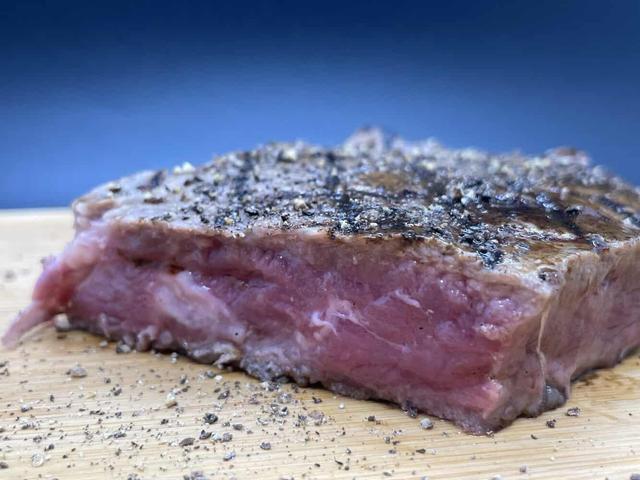
In conclusion, blue steak is a unique cooking method that offers a rare and flavorful dining experience. With its intense sear on the outside and tender, juicy center, blue steak caters to adventurous meat lovers seeking a different twist to their meals. While it may not be for everyone, those willing to try it will undoubtedly enjoy this bold culinary delight.
Learn More About Grilling
If you want to learn more about grilling, check out these other helpful resources!

